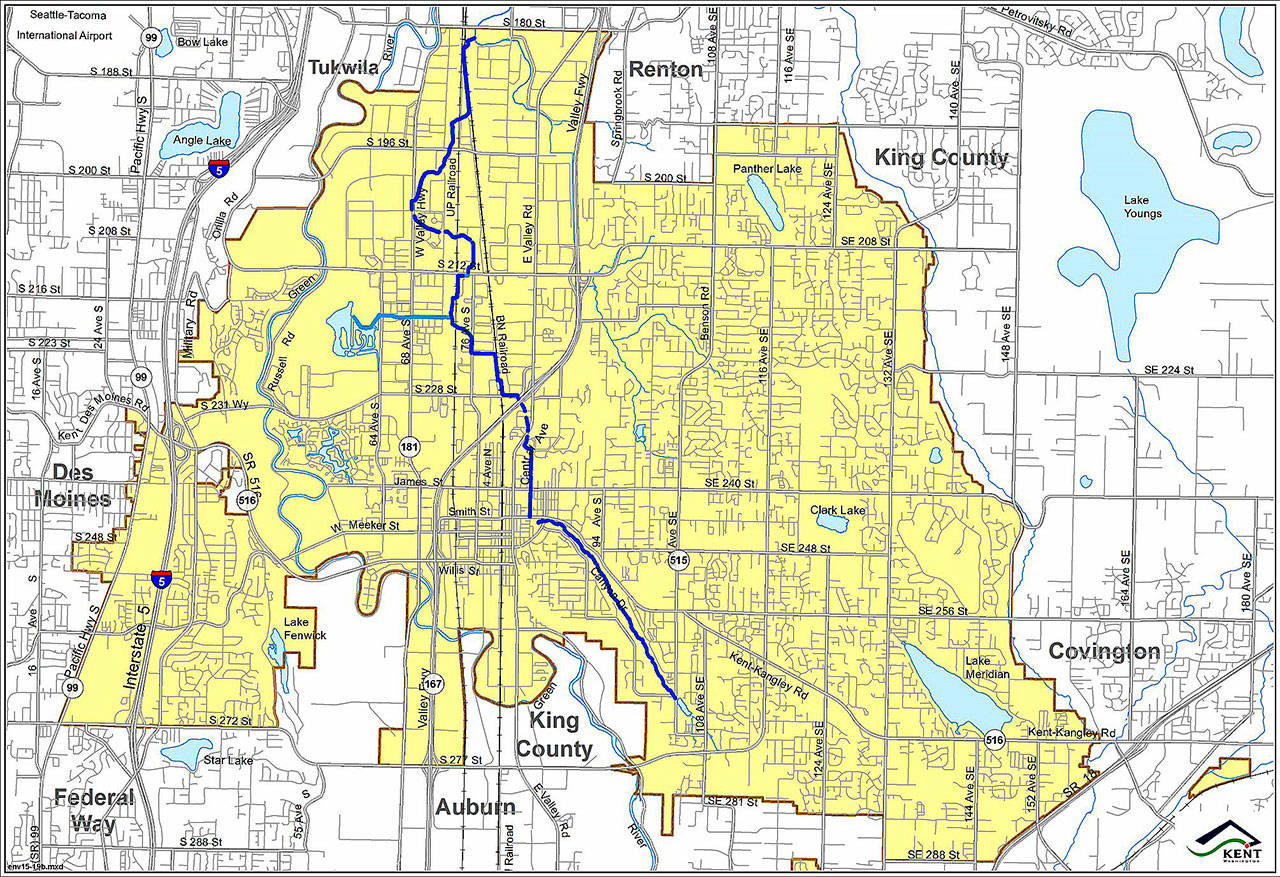It remains a lengthy process to get all of the necessary permits, but Kent city officials hope to start dredging Mill Creek in 2020 to reduce flooding in the Valley.
The groups that must sign off on the estimated $10 million project include the U.S. Army Corps of Engineers, the state Department of Fish & Wildlife, the state Department of Ecology and the Muckleshoot Indian Tribe.
City Public Works employees continue to meet with the federal and state agencies as well as the Muckleshoot Tribe to get all of the proper steps in order.
“The goal for the creek reestablishment is to submit for federal and state permits early this summer, and be under construction in 2020,” said Mike Mactutis, city environmental engineering manager, in an email last month. “The schedule to complete will be dependent on funding availability and that will be evaluated after the cost estimate is updated and through the city’s next budget.
“The goal is to bring the creek system back to its previous capacity, provide much improved ability to protect people from flooding and minimize the amount of maintenance needed in the creek going into the future.”
Sediment, as deep as 5 feet in some areas, has built up in Mill Creek and caused flooding along Woodford Avenue and Kennebeck Avenue as well as 76th Avenue South in the industrial area from about South 212th Street to South 228th Street, Mactutis told the City Council’s Public Works Committee during a Jan. 22 meeting.
An environmental permit for the dredging is needed from the Army Corps.
“The Army Corps wants to be sure we have wetlands mitigation, wants to know the type of dredging and wants us to look at alternatives to dredging,” Mactutis said.
Public Works Director Tim LaPorte told the council committee the city has few alternatives.
“There is not really an alternative,” LaPorte said. “We are not trying to move the creek – that’s not practical. And we can’t have the do nothing alternative. …The main thing that will help is to dredge the creek.”
The Muckleshoot Tribe must be consulted because of the potential impact to fish in the stream as part of the Green River watershed.
“The Muckleshoots want us to know the source of sediment and keep it out of the creek,” Mactutis said.
Once the city obtains all the permits, the dredging would take about three months to clear sediment from about a 3-mile stretch of Mill Creek from Earthworks Park to South 204th Street.
City officials are looking at other steps to take as well.
“These include fixes to prevent Mill Creek Canyon from eroding as well as improving our ability to catch the sediment before it gets into the flat valley bottom,” Mactutis said.
The process sped up a bit when the city found out it would not need an Environmental Impact Statement.
“After more detailed analysis of the wetland impacts and the mitigation proposed, it was determined by the city’s SEPA (State Environmental Policy Act) official, after additional discussions with the permitting agencies and Muckleshoot Tribe, that a SEPA checklist would be appropriate,” Mactutis said.
The city bought in 2007 what’s known as the Little property, near Kennebeck Avenue, north of James Street, for mitigation for the creek project by moving the stream away from houses and improve conditions for salmon, said Matt Knox, city environmental supervisor, to the Public Works Committee.
Mill Creek hasn’t been dredged since the early 1990s. Kent will work with King County Drainage District No. 1 on the dredging. The district dredged the creek in the 90s without permission.
“A commissioner authorized it without permits and was arrested by the Army Corps,” Mactutis said.
The $10 million cost remains an estimate but city staff expects to have a more accurate figure shortly.
“Following our recent meetings with the permitting agencies, we have a better idea of the likely wetland and stream mitigation requirements, and we will be refining this estimate in the near future,” Mactutis said. “The large portion of the funds will be from the city’s stormwater utility (fund). We are continually looking for additional grants to defray some of the costs.”
Residential rates are $12.51 per month for the storm drainage fee. Commercial businesses and multi-family complexes pay a fee based on impervious surfaces.
Talk to us
Please share your story tips by emailing editor@kentreporter.com.
To share your opinion for publication, submit a letter through our website https://www.kentreporter.com/submit-letter/. Include your name, address and daytime phone number. (We’ll only publish your name and hometown.) Please keep letters to 300 words or less.

